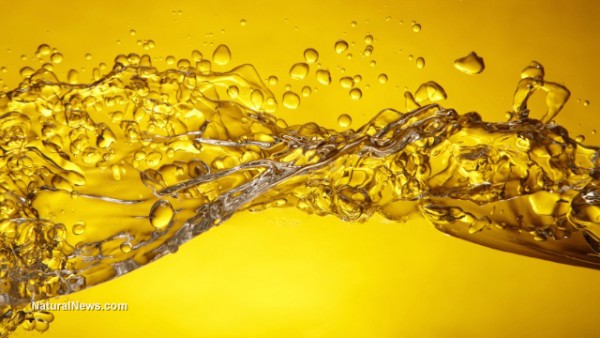Olive oil is a kitchen staple that’s touted for its myriad of health benefits. It’s considered a major component of the Mediterranean diet, and its monounsaturated fatty acids are heralded for being a healthy source of dietary fat. Countless studies have examined the potential health benefits of olive oil, uncovering many advantages to its consumption. It’s been associated with reduced heart disease and stroke risk, protecting against depression, preventing breast cancer and promoting healthy cholesterol levels.
All in all, olive oil is pretty great – if you can actually manage to find it! While your local grocery store likely has rows upon rows of golden-hued oils boasting the “olive oil” label, that doesn’t mean that’s actually what you’re buying, nor does it guarantee any sort of quality. Fraud in the olive oil industry is actually quite commonplace these days, as sad as that may be. Like everything else that’s mass-produced, good olive oil has all but gone the way of the dodo bird.
In January of 2016, CBS News even reported on the overwhelming fraudulence permeating the industry. Olive oils imported from Italy are particularly subject to being fake – now that the Italian mafia has taken over. CBS News reports that Italians call it the “Agromafia,” and it’s making about $16 billion annually.
Guy Campanile, an Italian-American, created a documentary on the great olive oil hoax. Campanile says that when you see real, true extra-virgin olive oil that doesn’t contain any additives, it’s truly extraordinary. “You know, when you see it there [in Italy], it’s this almost luminescent green,” he explained. “It looks like nothing you’ve seen before, and tastes like nothing you’ve tasted before.”
By the time it reaches American shores, most olive oil is no longer what it once was; improper storage and tampering often lead to a loss of quality. According to Campanile, the most common form of olive oil fraud is actually mixing Italian extra-virgin oil with other, inferior olive oils that are cheaper and lower in quality. Sometimes, it’s not even olive oil at all.
Findings from the Olive Center, located at the University of California at Davis, also suggest that most olive oils are not what they purport to be. The report, authored by a number of respected professionals, examined a variety of best-selling olive oil brands to see how they matched up against a number of testing protocols for extra-virgin olive oil. Both chemistry and sensory testing techniques were used.
In their executive summary, the researchers note that while there are many quality brands of olive oil available for purchase, many of the largest imported brand names have a quality level that is inconsistent at best. The researchers also stated that most of the top olive oil brands they looked at frequently failed to meet the international standards set for extra virgin olive oil.
For their year long study, the researchers from the Olive Center and UC Davis worked in collaboration with the Australian Oils Research Laboratory. Both laboratories evaluated the oils based on standards and testing methods set forth by the International Olive Council (IOC). This study also utilized two IOC sensory panels to analyze the olive oils.
The team took a total of 186 samples of olive oil in order to create a statistically significant picture of the quality of each oil being sold in California – which is ranked third for olive oil consumption globally.
The researchers found that of the top five imported “extra virgin” olive oil brands in the United States, 73 percent of the samples failed the IOC sensory standards for extra virgin olive oils, after being analyzed by the two IOC-accredited sensory panels. Depending on the brand and panel, the failure rate ranged from a high of 94 percent to a low of 56 percent. Eleven percent of the best-selling premium Italian olive oils failed the two panels. None of the samples from the Californian or Australian brands failed both panels.
The researchers note that sensory defects such as these are indicators that these samples are oxidized, of poor quality and/or are adulterated with cheaper refined oils. All of the oil samples passed the IOC’s chemistry standards for free fatty acids, fatty acid profile and peroxide value, however, the researchers note that several of the imported oils failed the ultraviolet absorption tests.
When it came to the German/Australian 1,2-diacylglycerol content (DAGs) test, 70 percent of the samples from the five top-selling imported brands failed. Another 50 percent failed the German/Australian pyropheophytin (PPP) test. All 18 samples from the Californian brand, California Olive Ranch, passed the DAG testing, and 89 percent passed the PPP test. For the Australian brand, Cobram Estate, every sample passed the DAG test, while all samples failed the PPP. About one-third of the samples taken from the premium Italian brand, Lucini, failed the DAG and PPP testing.
The researchers also state that the IOC would do well to begin including testing for DAG and PPP for the assessment and assurance of olive oil quality. They explain that low levels of DAG indicate that a sample is hydrolyzed, oxidized, of poor quality or otherwise cut with a cheaper, refined oil. Elevated PPP levels indicate that an oil is either oxidized or mixed with a cheaper, refined oil.
Eighteen samples were taken from California Olive Ranch, as well as from the premium Italian brand, Lucini. Only eight samples were taken from Cobram Estate. These three oils performed the best on the IOC sensory panels, with only two samples from Lucini failing both panels.
The top selling imported olive oil brands included Colavita, Star, Filippo Berio, Bertolli and Pompeian. Eighteen samples were taken from each brand. Of these five, Pompeian appeared to perform the worst – with 17 samples failing both IOC sensory panels. Pompeian oil also failed the DAG testing 100 percent of the time, and 94 percent of the samples failed PPP testing. Filippo Berio and Bertolli did not perform much better, with 15 and 13 samples failing both IOC panels, respectively. For the IOC testing, Colavita and Star did the best out of the top five brands, with just 10 and 11 samples failing both IOC sensory panels. However, they both failed DAG testing 78 percent of the time. Fifty percent of Star samples and 39 percent of Colavita samples failed PPP testing.
The researchers write that their results show that many best-selling brands fail to meet the IOC standards for extra-virgin olive oil, which is really quite concerning. They say that their findings indicate that the samples failed because of oxidation, adulteration with cheaper refined olive oil, or simply because of poor quality oil.
Just because something is popular with the masses doesn’t mean it’s worth buying. When purchasing olive oil, looking for government seals of approval can help to ensure that what you are buying is a quality product. Real olive oil should also begin to solidify if it is refrigerated. Fraudulent olive oil doesn’t just rob you of hard-earned money – it robs you of all the health benefits real olive oil possesses.
Sources:



